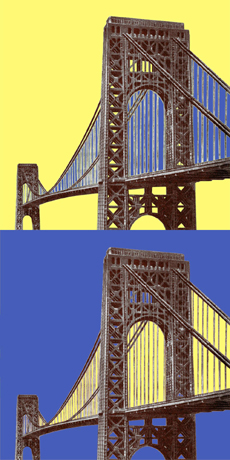| |
| |
|
|
|
|
|
|
|
|
|
|
|
|
|
|
| “When
I cross the George Washington Bridge or any of America's great bridges, I think:
men have done this. Construction is a sublime male poetry. When I see a giant
crane passing on a flatbed truck, I pause in awe and reverence, as one would for
a church procession. [. . . .] If civilization had been left in female hands,
we would still be living in grass huts.” Critic Camille Paglia, 1990 “Women think that an engineer is a man in hip boots building a dam. They don't realize that 95 percent of engineering is done in a nice air-conditioned office.” Engineer Beatrice Alice Hicks, 1951 |  George Washington Bridge towers, from American Society of Civil Engineers, Transactions (1933) Courtesy The New York Public Library, Science, Industry and Business Library Chicken&Egg Public Projects | Civil
engineering was once a man's domain. The media still present infrastructure as
a celebration of machismo. The towers of the George Washington Bridge (1931) express a broad-shouldered monumentality. Othmar Ammann, designer of the bridge, deliberately made the towers appear mighty. He felt they looked better that way. With the Brooklyn Bridge in mind, Ammann hoped that the stone design of architect Cass Gilbert would cover the frameworks. It did not happen. Infrastructure acts as a mirror for a variety of perspectives. Some civil engineering works might be viewed as “masculine,” others “feminine.” These labels reflect attitudes about the roles of men and women, not what they are capable of. In recent decades, engineering societies have encouraged diversity. The number of women receiving engineering degrees is on the rise. Nine percent of civil engineers are women. Will this change our bridges? |
Privacy Policy | Rules and Regulations | Using the Internet | Website Terms and Conditions | © The New York Public Library
|